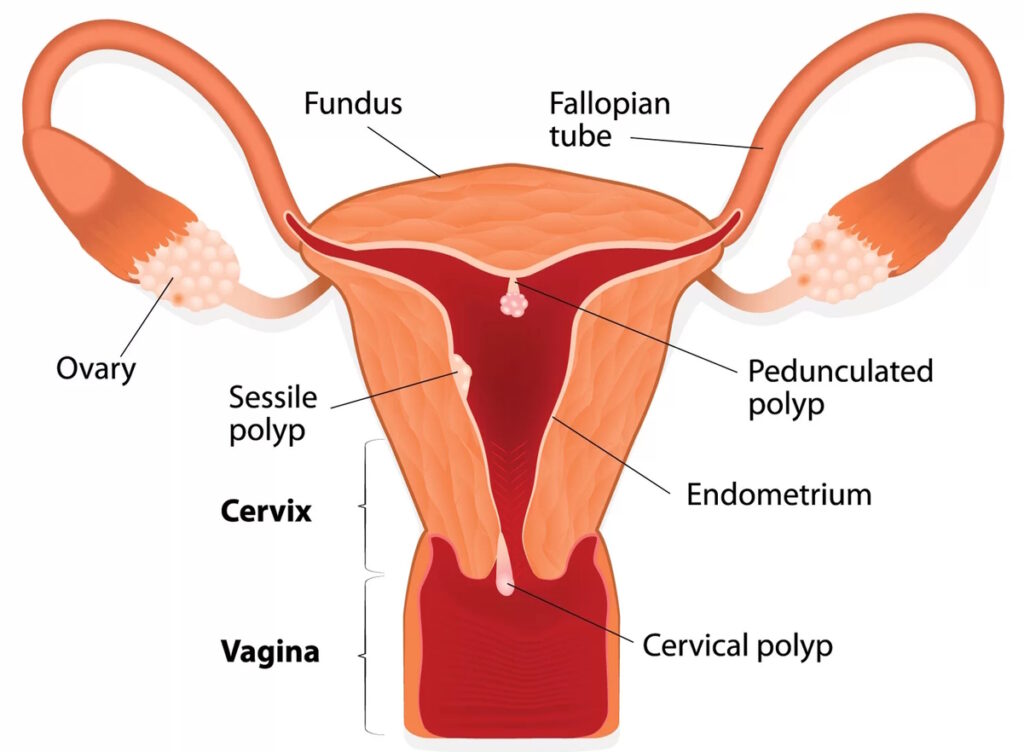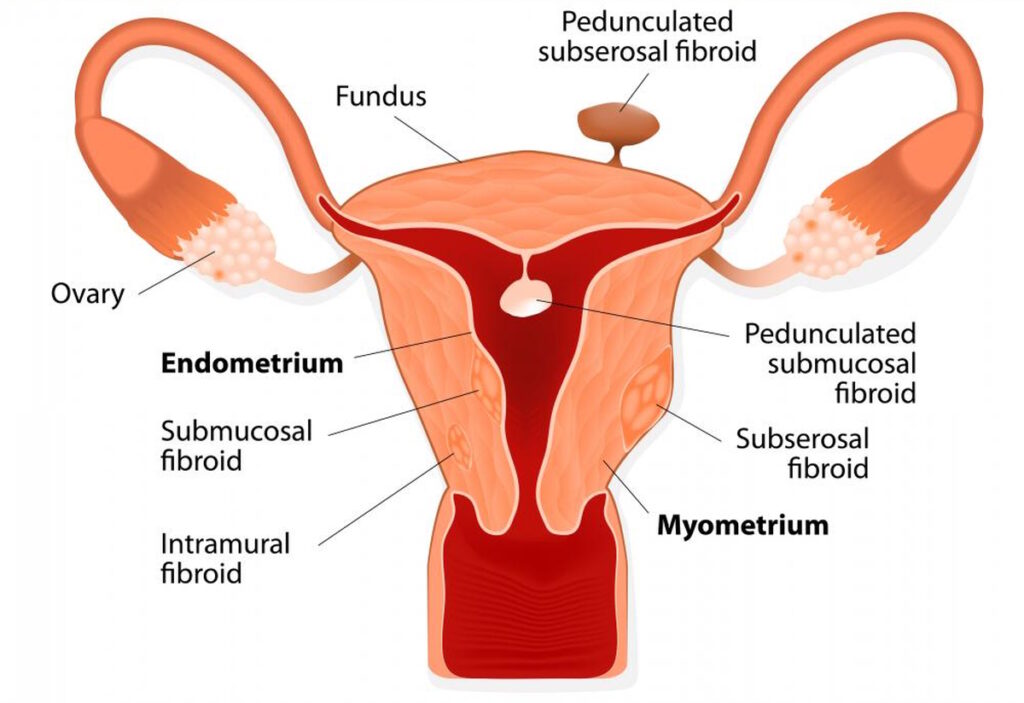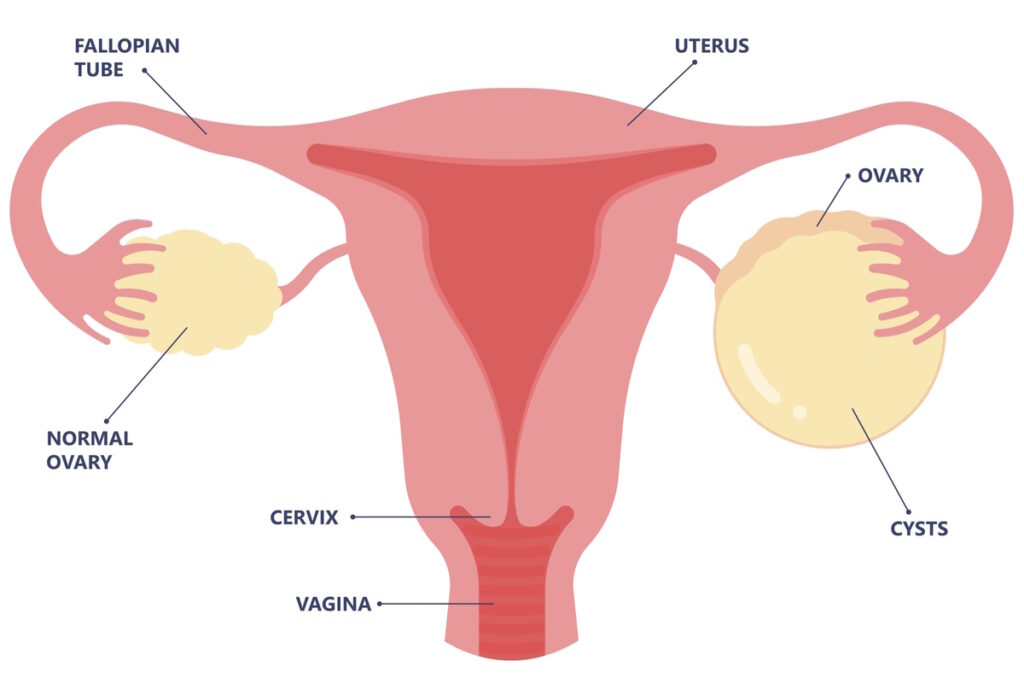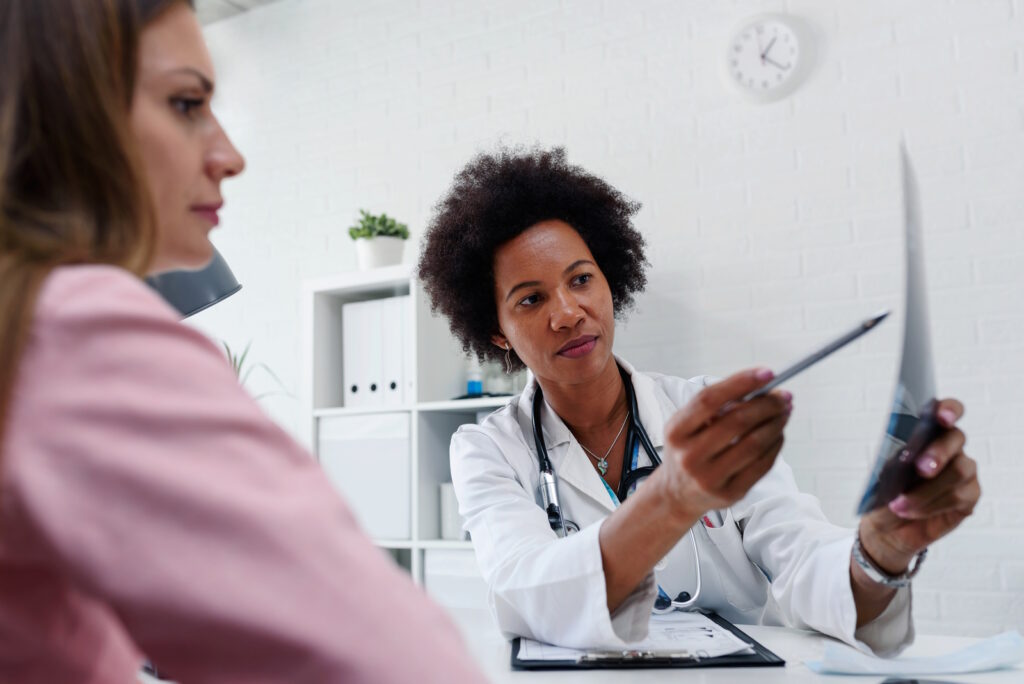Due to the menstrual cycle, hormonal changes, and other lifestyle factors, over time women may develop common gynecological conditions. One great benefit in having regular gynecological doctor visits is that you don’t have to worry about self-diagnosing your symptoms or knowing the difference between polyps, fibroids, or cysts. Your primary care doctor or gynecologist can keep you educated on the differences and next steps. Of course, this is only possible if you have regular checkups and ongoing conversations with them about what changes are happening in your body.
While polyps, fibroids, and cysts can cause pain, and the potential exists for some of them to coexist, they are vastly different from each other. You may even be wondering, what is the difference between the three? Are the symptoms different? Do I need to be concerned about one more than the other? We understand, any growth or tumor can be scary when you first hear about it, especially when you’re not sure what they mean and how they might impact your health. This is why knowledge is the key.
How Do You Tell If You Have Polyps, Fibroids, or Cysts?
Below is a breakdown of the differences between polyps, fibroids, and cysts.
Polyps – What are they?
Polyps (also called uterine polyps) are abnormal tissue growths located on the inner lining of the endometrium or in the lining of the cervix. They are typically caused by an overgrowth of endometrium tissue. Polyps look like soft, red, ball-shaped growths attached to a stalk protruding from the uterine lining. They are typically non-cancerous. However, that doesn’t mean they can’t develop into a more serious issue if left undetected or untreated. The good news is, the risk of becoming cancerous is extremely low—only 1-2% in premenopausal women and 5-6% in postmenopausal women.

Sometimes, polyps will go away on their own and won’t cause any pain. Symptoms include:
- Irregular menstrual bleeding
- Bleeding or spotting between periods and after intercourse
- Cramps
- Dull achy abdominal and back pain
Any woman can develop polyps. With that said, you are more at risk if you have gone through menopause. Women who are overweight, have high blood pressure, and are receiving hormone replacement therapies are also at risk.
Polyps can be diagnosed during a vaginal ultrasound, endometrial biopsy, or, in some cases, a physical exam. Treatment may also not be necessary unless you’re experiencing abnormal bleeding or are at higher risk for uterine cancer. Medications may lessen symptoms in these situations and if you’re in pain. Surgery options such as a hysteroscopy can be employed to remove polyps and send them to a lab for biopsies.
Fibroids – What are they?
Fibroids and polyps can look similar in imaging tests. Furthermore, a woman could have one or several of varying sizes and locations. They can also coexist in 20.1% of patients, according to one study. But these are vastly different growths. Fibroids are non-cancerous tumors that develop from your uterus’ muscle tissue. They are the most common tumor in the female reproductive system, so much that researchers estimate 70-80% of all women develop fibroids between the ages of 35 and 54. Most women find out they have fibroids during a routine pelvic exam with their doctor and may take a “wait and see” approach if they aren’t in pain.

If your fibroids are symptomatic, you may experience any of the following:
- Painful periods, including heavy or inconsistent cycles
- Debilitating cramps, pelvic pain, and pressure
- Back or leg pain
- Bloating or swelling in the lower abdomen
- Back or leg pain
- Weight gain
- Pain during sexual intercourse
- Urinary frequency
- Constipation, diarrhea, and rectum discomfort
- Fatigue and weakness
As you can see, polyps and fibroids share some symptoms, mostly as it relates to irregular menstrual bleeding and spotting between periods.
Fibroid treatment doesn’t have to be invasive. In fact, more women than ever are opting to forego bloody surgical options such as hysterectomy and myomectomy that come with risks by choosing uterine fibroid embolization (UFE). Rather than remove fibroids requiring surgical incisions and a lengthy recovery time, UFE causes fibroids to shrink and die. As a result, UFE is over 90% effective at eliminating fibroid symptoms. By opting for a minimally invasive approach, a woman who fears fibroid surgery or isn’t a candidate can avoid all of that and still achieve highly successful results.
Cysts – What are they?
Cysts are the most dangerous growth between polyps, fibroids, and cysts. While cysts can be benign, they also can be a telltale sign of possible cervical, ovarian, or uterine cancer. Uterine cancer is the fourth most common cancer for women in the United States. Worldwide, an estimated 417,367 people were diagnosed with uterine cancer in 2020.
Cysts are sac-like pouches that can be either solid or filled with fluid, and a woman can have one or several varying sizes. Many cysts won’t cause symptoms at all, but when they do, a woman can experience:
- Sudden, sharp pain (usually from a ruptured cyst)
- Abdominal pressure
- Bloating and weight gain
- Pelvic pain
- Pain during sexual intercourse
- Urinary frequency
The greatest danger with cysts is if they become abnormally large, are painful, and eventually burst. This rupture can release a cyst’s contents into the body, leading to other illnesses.

Some ovarian cysts will dissolve on their own with no action required. But it is important that you and your doctor keep a watchful eye on any cyst that doesn’t go away, gets larger, or causes pain.
Depending on your situation, cysts may need to be removed surgically. A common procedure called laparoscopic surgery allows your doctor to investigate the cysts and use a small incision to remove them. This procedure, along with another called a cystectomy, will keep the ovaries and other pelvic organs intact. In more severe cases, both ovaries may need to be removed to improve quality of life and avoid further complications.
What To Do If You Suspect Polyps, Fibroids, or Cysts?
The biggest thing with polyps, fibroids, and cysts is to speak up when you are in pain or notice unexplained changes in your body. It’s best to avoid normalizing your symptoms as something to be expected with your menstrual cycles or pain and issues to simply endure as a woman. No one is expecting you to diagnose yourself or suffer in silence—simply schedule an appointment with your doctor to discuss your symptoms. Many times, you may find that you have nothing to worry about after a routine pelvic exam or ultrasound. If there is a need for additional imaging, tests, or biopsies, it’s better to be proactive than to allow your condition to go untreated.
At-A-Glance
- Polyp – Abnormal tissue growth within the inner lining of the uterus, aka the endometrium.
- Fibroid – Noncancerous muscle growth within the walls of the uterus.
- Cyst – Fluid-filled sac on one or both ovaries that usually forms during ovulation.
Fibroid Institute Texas Can Help With Your Fibroid Treatment
At Fibroid Institute, we understand it can be scary not knowing what is going on with your body. Polyps, fibroids, and cysts can cause similar symptoms or none at all, but the reality is that it’s important to recognize the difference and have consistent conversations with your doctor. If you find that you have fibroids, and you want to pursue fibroid treatment with uterine fibroid embolization (UFE) as the right option for your unique situation, you’ve taken the first step toward reclaiming a symptom-free life.

Being #FibroidFree is as easy as 1-2-3 with UFE. Rather than a hospital stay, UFE is a same-day outpatient procedure. In fact, at Fibroid Institute Texas, we offer UFE to patients in the comfort of our offices equipped with advanced medical technology. Most major medical insurance providers cover the cost of UFE.
The expert doctors and specialized team at Fibroid Institute, with Dallas and Houston fibroid clinics, have helped thousands of women discover the joys of living fibroid free. Our doctors are highly experienced UFE specialists, 100% focused on fibroid issues. With each UFE procedure, patients are empowered to achieve their full potential without being limited by fibroid symptoms. For many women, the UFE procedure changed their lives. Meet some of these women here.
We are dedicated to helping you become #FibroidFree. Get started now with Fibroid Institute Dallas at 214-838-6440 or with Fibroid Institute Houston at 713-903-3733 or complete the form below.
"*" indicates required fields
Fibroid Institute Texas serves the Dallas and Houston areas including Addison, Carrollton, Plano, Frisco, Craig Ranch, McKinney, Allen, Fort Worth, Grand Prairie, HEB, Arlington, Hutchins, Irving, Duncanville, DeSoto, Cedar Hill, Lancaster, Cockrell Hill, Highland Park, University Park, Park Cities, Garland, Mesquite, Richardson, Dallas, Sherman, Houston, Sugar Land, Katy, Webster, Clear Lake, The Woodlands, Universal City, Spring, Kingwood, Stafford, Conroe, Texas City, Cypress, League City, Bellaire, and more.
Prior to starting any new treatment or if you have questions regarding a medical condition, always seek the advice of your doctor or other qualified health provider. This information is not a substitute for professional medical advice.
*Patient stories are true. Names and/or photos may be changed to protect patient confidentiality.

